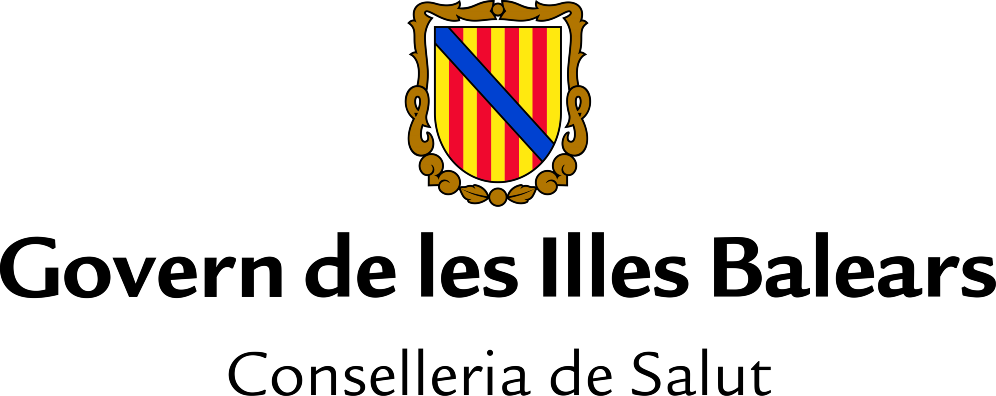
Have you heard of communication styles? What about assertive communication? In this blog we already explained what the 4 communication styles consist of.
In the present post we are going to briefly recall those styles, with the intention that each reader realizes which one they use regularly. This will be the first step to identify in which aspects we need to improve the way we communicate. After this, we want to explain some techniques to practice the assertive communication style, which is considered the most adaptive one according to the Healthcare Psychology.
Communication styles. Identify yours.
Surely you are capable of using all the styles, but you will tend more to one of them and there will be situations or people with whom you use one or the other more often. Try to ask yourself which one you use in each context (at work, with family, with friends, talking to specific people, under stress, when you are tired, etc.).
Let’s start with the troublesome ones:
- Passive communication style: the person who uses it puts the needs and requests of others before their own ones. Therefore, she/he is someone who prefers not to express her/his opinion, follows orders and avoids conflict. If she/he does speak, will be hesitant, speak softly, and likely show signs of anxiety, such as avoiding eye contact.
- Aggressive communication style: the person who communicates aggressively usually feels offended by others’ comments, perceives that they are being disrespectful or being unfair to them. The emotion that this will arouse will be anger, so the aggressive speech will be directed at blaming, threatening or embarrassing the other. This will be accompanied by more tense and challenging body language such as frowning, clenching the fists, raising the voice, etc.
- Passive-aggressive communication style: this style seems to be passive, but has an aggressive function that is hidden. The passive-aggressive person refuses to express their feelings of disagreement, but lets it slip indirectly. A passive-aggressive speech is going to be riddled with sarcasm and irony, and also by silences. In any case, the aim of this style will be to boycott the interlocutor.
In all three styles mentioned, the person has trouble expressing their thoughts, feelings, and needs, especially when they conflict with others’ interests. Each one uses a style to face that difficulty in a different way. However, all of them imply risks in relation to relationships with others.
The person who uses a passive style will be perpetually dissatisfied by leaving their needs in the background. People will not take her/his opinion into account and will not respect her/his word. The person who uses an aggressive style is going to be viewed with fear, rejection and resentment. And the person who uses a passive-aggressive style is going to come across as someone who is manipulative, false, and who cannot be trusted.
We are left with the assertive style.

What is assertiveness?
The person who communicates assertively is able to express her/his needs, thoughts and feelings in a firm and calm way, and at the same time show empathy and respect towards others. To do this, she/he takes responsibility for her/his own emotions and tries not to blame or judge others.
It may seem difficult to put into practice, and indeed, it is for many people. This occurs because, while the other styles are responses to unpleasant emotions (such as anxiety and fear in the passive style, or anger in the aggressive style), the assertive style must be taught and practiced conscientiously, and requires certain aspects to work previously, such as self-esteem, knowledge of one’s own needs and the capacity for empathy.
Anyway, what is important is that we all have the ability to learn it, regardless of our abilities, our self-esteem and the communication style from which we start.
The question now is: How can we begin to put it into practice?

1. Question your interpretation of things, and ask before judging.
It is common for our minds to misinterpret other people’s behaviour and messages. Then, our response may be highly conditioned by that interpretation and by the emotion generated in us. For example:
You are irresponsible. You never have your homework done.
In this case, we have judged the person for her/his behaviour with a disqualifying adjective.
Put assertively, we could pass it to:
I’ve noticed that you haven’t been doing your homework lately. Is there something going on that you should tell me? Can I help with something?
In this case, the formula is: description of the situation + question.
2. Speak in the first person.
The point is showing that what you say is your own interpretation of reality, and therefore, you may be wrong. You must be responsible for what you think and feel. For example:
Sorry, I’m sure I’m bothering you. I just wanted to ask you…
Here we assume that the other is upset with our behaviour. It’s hard for us to ask for anything. Put assertively, it could look like this:
It seems to me like you’re busy. I’m sorry, but I need to ask you to…
The formula would be to use expressions such as: “I would like to”, “I think”, “I have the feeling”, “from my experience”, etc.
3. Take responsibility for what you feel.
It is easy to blame others for our emotions and behaviour. However, most of the time the interlocutor does not seek to arouse any emotion in us, and we do not choose to feel it either. In any case, those are our feelings and our responses, so we cannot make others responsible for it.
You make me feel anxious every time you look at your phone when I’m talking to you!
Here we are blaming the other for the way we feel: “you make me feel…”.
Assertively, we could say:
When we’re talking and you look at your phone, I feel ignored and get nervous.
The formula would be: description of the other’s action + how you feel expressed in the first person “I feel…”
4. Describe the facts objectively and emphasize their consequences
As in the first example, you have to be careful about qualifying other people for their behaviour. Also, we are much more likely to fall in this if what other people do has an impact on us. In a case like that, we can feel that they are acting selfishly and it seems to us an unfair situation.
Example: Someone is late for the meeting and the boss says: Wow, look who’s just arrived! Mister sheets! How lucky you are, we were just finishing…
The boss is clearly being sarcastic here. Although it is not judging directly, a nickname is being given to the other. It is also said that that guy is lucky because the meeting is getting finished, which implies the hiding belief that he wasn’t interested to join it. Remember the first step is trying not to get guided by our interpretation. In this case, moreover, the action of the latest guy has supposedly affected the team in a negative way.
How can we say it assertively?
When someone is late for a meeting, they miss important information and then they won’t understand the work they have to do.
The formula would be: describe the behaviour of the other + emphasize the consequences.
5. Describe the consequences from your point of view
This is very useful when the consequences we perceive are not entirely observable. In this case, we must resort again to the first person.
You never say hello to the neighbour since what happened to her… she must be angry…
We take for granted a consequence that we do not know if it exists and we also make responsible to the other.
Maria is always very kind to us. I noticed that you haven’t greeted her. I think she may feel slighted, and it makes me feel sad. What do you think?
Here the formula would be: mentioning the other’s behaviour + expressing an observed consequence (“I get the impression”/”I perceive that”) + asking a question about the other’s perception.
6. Avoid generalities
Avoid using terms like “always”, “never”, “everyone”, “no one”. Be precise.
You always reply to everyone at the moment and you leave me on seen!
In assertive mode, it could be something like:
Yesterday you took a long time to answer me when I asked if you were coming to dinner. I felt ignored, even more so when I saw that you were online for a long time.
We must specify what, when, how, who… and avoid using the above mentioned generalizing terms.
7. Control your non-verbal language
Verbal and body language must be coherent. Otherwise, our attempt to be assertive will fail.
If we use any of the above formulas, but we clench our fists, point our fingers, avoid looking, or do anything else that denotes anger or insecurity, the message will not take effect.
We must project interest, listen and openness. How? With a relaxed posture, with frequent eye contact, trying not to distract from the interlocutor, smiling, nodding…
8. Control your paraverbal language
The same thing that happens with body language, happens with the paraverbal. This refers to the voice: speed, tone…
Speaking too softly can convey insecurity, and speaking too loudly can make you come across as bossy and unsympathetic.
Talking too slowly can make you boring, and talking too fast can make you look stressed.
We must modulate the voice in such a way that it denotes firmness and calmness at the same time. For this, it is necessary to learn to regulate emotions. Something that can help us is consciously lowering the volume of our voice, speaking more slowly, taking a deep breath, and relaxing our facial and body muscles.
9. Roleplay
Rehearsing will be necessary in order to control our body and non-verbal languages. This is because they are very automatic responses in us, and learning to control them live can be difficult.
We can rehearse in front of the mirror, or better yet, with another person who knows the techniques described in this article, such as a psychologist. The professional can create assertiveness dynamics with which we will put the described formulas into practice and obtain instant feedback.
It is also advisable to expose ourselves to situations from less to greater difficulty. If we start with difficult conversations, it will surely not go well for us. Better to start putting it into practice in day-to-day small talk, to gain confidence. Meanwhile, we can keep rehearsing the most difficult topics for us to face.
10. Evaluate if it is the right time to speak
Finally, it is necessary to see the suitability of the moment to talk about a certain topic. It is not easy to practice assertiveness, but it will be even more difficult if the other person is not receptive to talk about the theme we want. What can happen in this case is that the response we receive is unpleasant. We might have made an effort in vain, but we may also get the wrong impression of the usefulness of this exercise, or of our ability to carry it out.
As you may have guessed, assertiveness can help us in many situations, and it is worth training it to achieve our goals. Assertive communication will help us:
- set limits and function better in our personal and professional life
- better manage conflict and solve problems with other people
- let us be listened and be supported in our decisions
- manage our daily stress
Let’s practise it!
Guillem Nicolau Coll
Psicólogo General Sanitario
nº col.: B-02773








